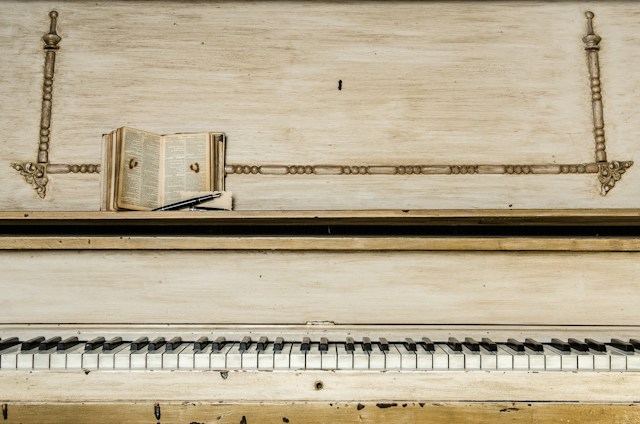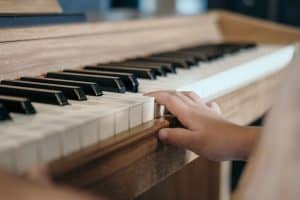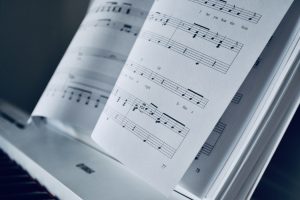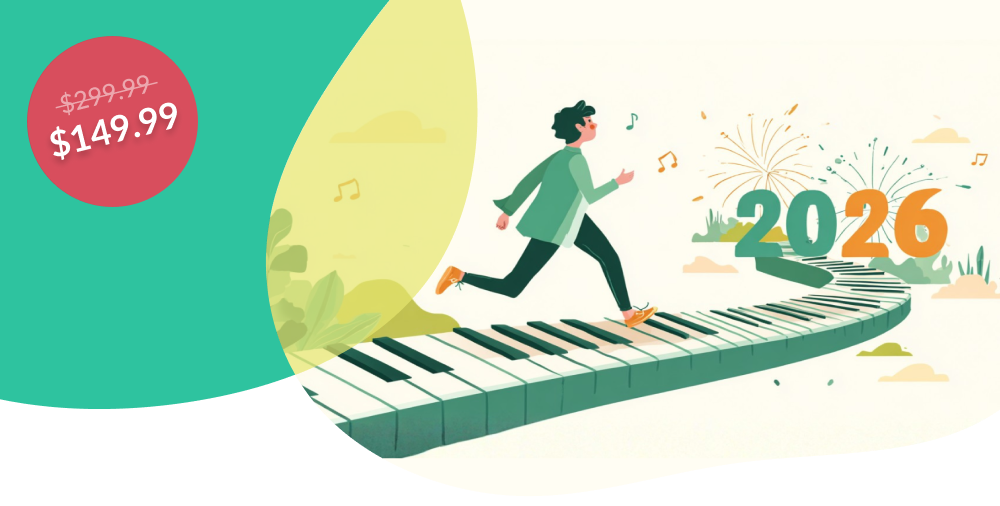What are dotted notes?
What is a dotted note? A dotted note is a rhythmic notation that indicates a note should be played for a longer duration compared to its regular counterpart. This extension of length is achieved by adding a dot immediately after the note head.
How do dotted notes work?
A dot adds half of the original note’s value to its duration. For example, a dotted half note (minim) lasts for the duration of a half note plus a quarter note. This extension allows for more nuanced and diverse rhythmic patterns in music, enriching the overall texture of the composition.

Different types of dotted note values
There are many types of dotted note values, each with a specific duration. Understanding these will help you read piano notes more confidently and accurately.
Dotted whole notes (semibreves)
A dotted whole note is equivalent to a whole note plus a half note. In terms of beats, if a whole note represents four beats in common time (4/4), a dotted whole note would last for six beats.
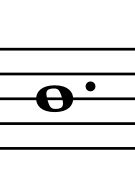
Dotted half notes (minims)
As we have seen, dotted half notes merge the length of a half note with a quarter note, sustaining the musical frequency, totaling three beats. Understanding how to count dotted half notes is crucial for maintaining proper rhythm in many musical pieces.
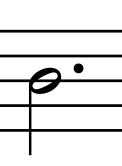
Dotted quarter notes (crotchets)
Dotted quarter notes combine the duration of a quarter note with a note of half of its duration, an eighth note. In a 4/4 time signature, these notes last for one and a half beats, providing a means for rhythmic variation.
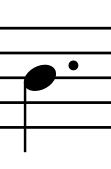
Dotted eighth notes (quavers)
Dotted eighth notes extend an eighth note by adding the length of a sixteenth note. Being able to count dotted eighth notes is vital in genres like jazz and complex classical pieces.
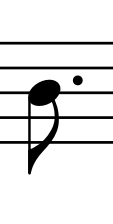
Dotted sixteenth notes (semiquavers)
Dotted sixteenth notes are a sixteenth combined with a thirty-second note. They are particularly challenging due to their intricate rhythm and articulation in fast-paced musical passages.
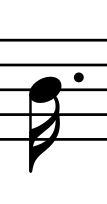
Double dotted notes
As well as the single dotted note the double dotted note is also seen in music, although less frequently. The double dot further extends the duration of a note, adding more possible variations to musical rhythms. Double dots follow the same rules as single dotted notes but the added value is from the duration of the amount the initial dot adds. For example:

To compare all these common dotted note and rest values check out this handy dotted notes chart.
| Note Type | Note Symbol | Rest | Counts |
| Dotted whole note | 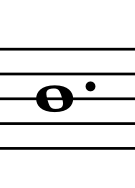 |  | 6 |
| Dotted half note | 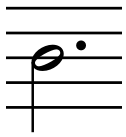 |  | 3 |
| Dotted quarter note | 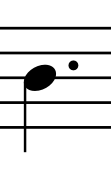 | 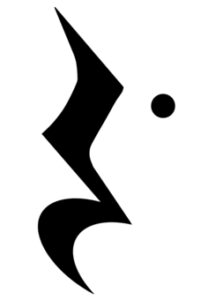 | 1 ½ |
| Dotted eighth note | 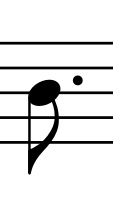 |  | ¾ |
| Dotted sixteenth note | 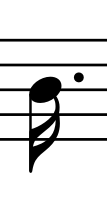 |  | ⅜ |
How to play dotted notes?
Counting new rhythms can be difficult to do on your own. If you are in need of any more guidance playing, understanding or counting dotted notes Skoove is here to help. Take a look at our catalog of tutorials and songs to help you fully incorporate your newfound dotted note knowledge into your playing.
How to count dotted notes?
If you’re wondering how to count dotted quarter notes or any other note or rest duration check out this table.
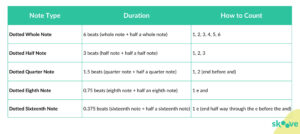
Now you have mastered dotted notes with Skoove you have unlocked your next step in music theory and playing. Happy practicing!
Author of this blog post:
Susana Pérez Posada

With over seven years of piano education and a deep passion for music therapy, Susana brings a unique blend of expertise to Skoove. A graduate in Music Therapy from SRH Hochschule Heidelberg and an experienced classical pianist from Universidad EAFIT, she infuses her teaching with a holistic approach that transcends traditional piano lessons. Susana’s writings for Skoove combine her rich musical knowledge with engaging storytelling, enriching the learning experience for pianists of all levels. Away from the piano, she loves exploring new places and immersing herself in a good book, believing these diverse experiences enhance her creative teaching style.
Published by Lydia Ogn from the Skoove team







